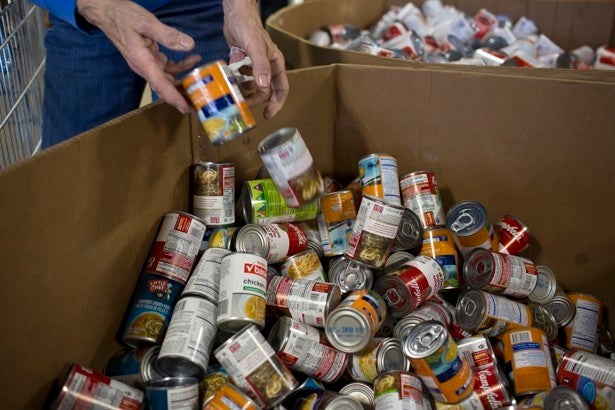
By Aria Bendix
With university tuition and living costs on the rise, community colleges have become increasingly attractive for those looking to save on their education. And yet community-college students, in particular, face challenges affording school.
A new report from the Wisconsin HOPE Lab finds many more community-college students are homeless or lack food than previously reported. Overall, the survey looks at 33,000 students across 70 community colleges in 24 U.S. states. Of these students, around two-thirds are “food insecure,” meaning they have limited or uncertain access to nutritionally adequate and safe foods. Around half of these students are also “housing insecure,” meaning they are forced to move often or cannot afford rent or utilities.
RELATED: The New Preschool Is Crushing Kids
More striking still is the number of community-college students who are homeless: around 14 percent. The report identifies a few key differences between homeless students and the remainder of those surveyed—namely, that homeless students have less reliable work schedules in fields that are less related to their majors or intended career. Homeless students are also half as likely to earn a living wage (at least $15 an hour).
The report finds that nearly a third of homeless students at community colleges rely on loans to finance their education. They’re not alone. Another third of students who are food and/or housing insecure are employed and receive financial aid. “Food insecure students appear to be struggling to make ends meet despite working or reaching out for assistance,” the authors write. This is consistent across urban, rural, and even suburban areas.
In most cases, the report finds, financial aid is unable to alleviate issues of homelessness and hunger. According to the report, a dependent student from a family in the lowest annual income quartile would have to pay 40 percent of her family’s total income just to finance a year’s tuition after accounting for her grant aid.
It’s situations like these—in which students cannot have their basic needs met, despite taking advantage of existing resources—that often force them to drop out of school. According to a report from the Center for Community College Student Engagement at the University of Texas at Austin, nearly half of community-college students say a lack of finances could cause them to withdraw.
And yet community colleges are still “the most accessible, affordable points of entry to higher education,” according to the Wisconsin report. So why are their students suffering the most?
“One of the hardest things about serving people on the margins is finding them,” Sara Goldrick-Rab, the founder of the Wisconsin HOPE Lab, told Inside Higher Ed. With this latest report, the information is clear: Homeless and hungry students can be found all across the country.
This story originally appeared on TheAtlantic.com.
More from The Atlantic: The Life-Changing Magic of Mushrooms, The Different Stakes of Male and Female Birth Control
